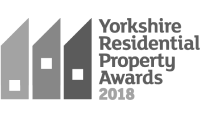Navigating office attire can be a struggle for young professionals. Workwear adheres to a distinct set of guidelines and expectations, unlike what you wear at home or for social events.
Making the right clothing choices can be daunting when beginning your career — especially as your office attire undeniably plays a pivotal role in shaping how your colleagues and managers perceive you.
Your clothing is more than a fashion statement — whether you like it or not, it’s a testament to your competence and professionalism.
It’s time to roll up your sleeves and take your work wardrobe seriously. Join us as we uncover the art of dressing for success in the contemporary workplace, presented in eight easily digestible segments.
1. Research the company’s dress code
When attending a job interview, observing current employees’ attire can offer valuable insight into the company’s dress code and office clothing culture. This can serve as a helpful foundation for your workplace wardrobe.
However, circumstances may vary. In some cases, you may not have the chance to see future colleagues’ attire during the interview — especially if it takes place online.
In this case, a primary and crucial step in preparing for success in your new workplace is to conduct thorough research on the company’s dress code.
Typically, you can find this information in your onboarding materials or the company’s official website. If it’s not readily available or you need more information, don’t hesitate to contact your line manager or HR for clarification.
While company dress codes can sometimes be quite broad or open to interpretation, it’s essential to understand expectations. You can complement internal resources with online research specific to the company’s industry and culture.
2. Learn from your peers
Every workplace and industry has unique, unspoken guidelines for dressing appropriately.
As a new employee, observing what your colleagues wear in different work situations is helpful. For instance, what they wear for a day at their desk compared to an important client meeting.
For a deeper understanding, pay special attention to those employees who excel in their roles and to individuals holding positions you aspire to fill in the future. As the saying goes, “dress for the job you want.”
These individuals often set the standard for suitable attire within the organisation and can serve as excellent role models for your workplace wardrobe choices.
3. Prioritise comfort
Comfort should be at the forefront when selecting your work attire, as you’ll spend a lot of time in these clothes.
When assembling your wardrobe, choose pieces made from high-quality, breathable materials like cotton and linen.
Consider layering with cosy options like a woollen cardigan or jumper to adapt to changing seasons. Alternatively, throw on a classic blazer, which will keep you warm and add a touch of professionalism to your look.
One crucial practice is to give new pieces a trial run for a few hours before introducing them to your workwear rotation.
This trial period allows you to assess their comfort and suitability. Remember, discomfort can be a significant distraction, affecting your productivity and overall performance.
So, wear clothes that enable you to give 100% to your work.
4. Select jeans carefully
When your workplace dress code permits jeans, it’s essential to select wisely. Choose dark washes in classic black or blue, as these colours tend to be the most universally accepted in professional settings.
While choosing your jeans, prioritise the fit that makes you feel most comfortable and confident.
Avoid styles with excessive fading or distressing, as these tend to be too casual for most offices.
A clean, well-maintained pair of dark-wash jeans balances comfort and professionalism, allowing you to effortlessly blend style and workplace appropriateness.

5. Consider your shoes
Footwear often takes a backseat in the outfit-planning process but can speak volumes about your professionalism and attitude in the workplace.
Your shoe style should align with your industry and work environment. Select well-fitting, comfortable shoes for office wear in spring and summer. As the seasons change, consider versatile boots for added warmth.
Next, it’s time to think about style. Excellent options include loafers, low-heeled pumps, slingbacks, ballet pumps, Oxford brogues, lace-up shoes, and Chelsea boots. Select a style that resonates with your taste and works with your clothes.
In a casual office, smart shoes can be paired with jeans and a relaxed shirt or blouse for a harmonious look.
Similarly, you can tone down a formal suit with laid-back shoes or clean, high-quality trainers (if the dress code allows) to strike a balanced and contemporary style.
Footwear is a powerful tool for expressing your professional identity, so choose wisely.
Choosing and purchasing the shoes is just the beginning — you also need to ensure they remain tidy and well-maintained.
6. Embrace the power of neatness
Remember that the little things often make the most significant difference in your daily work preparation.
Your attention to detail in your appearance doesn’t go unnoticed — it sends a strong message to those around you and aligns with the qualities employers value in their team members.
Start by ensuring your clothes are crisp and well-pressed. Taming your hair and maintaining a well-groomed beard is essential for a polished look.
Don’t forget to pay attention to the state of your fingernails, too — they’re on display in every meeting and interaction.
Embracing neatness in these finer details enhances your professional image and conveys your commitment to precision and thoroughness — qualities highly regarded in the workplace.
7. Master the art of suiting up
In a formal business setting, you’ll typically find yourself donning a suit or, at the very least, a blazer paired with smart attire.
Occasions that call for a suit, such as awards ceremonies or product launches, may arise in a casual office environment.
To avoid last-minute wardrobe dilemmas, it’s wise to invest time in finding the perfect suit and prepare it for those unique invitations.
The fit of your suit is paramount — avoid the pitfalls of a baggy or overly tight suit by trying on several options until you find the perfect fit.
While navy blue and charcoal grey are popular for work suits, you might like to consider what complements your skin tone best. A suit’s colour can drastically affect your overall appearance.
Choose a versatile two-piece that can be mixed and matched with other pieces in your wardrobe for maximum utility.
For those looking to infuse personality into their attire, consider patterned suits or experiment with different tops — like t-shirts, blouses, or shirts worn underneath.
When a full suit isn’t obligatory, repurpose the suit jacket more casually by pairing it with a dress, jeans, or a top and skirt, allowing you to adapt your look to various office scenarios effortlessly.
8. Finish the look
It’s a common oversight among young professionals to neglect the role of outerwear when curating their work wardrobe.
However, the right coat or jacket can be the finishing touch that elevates your outfit and gives your appearance a polished edge.
Imagine you’ve meticulously selected your clothing, paying attention to every detail, only to throw on a worn, shabby raincoat as you head out.
This oversight can inadvertently convey a negative message to your employer.
Your outerwear is a crucial component of your overall image, so choose it thoughtfully to ensure that your outfit appears as well put-together on the outside as it is on the inside.
Excellent young professional outerwear options include longline single or double-breasted coats, trench coats, woollen wrap coats, funnel neck coats, and leather jackets.



